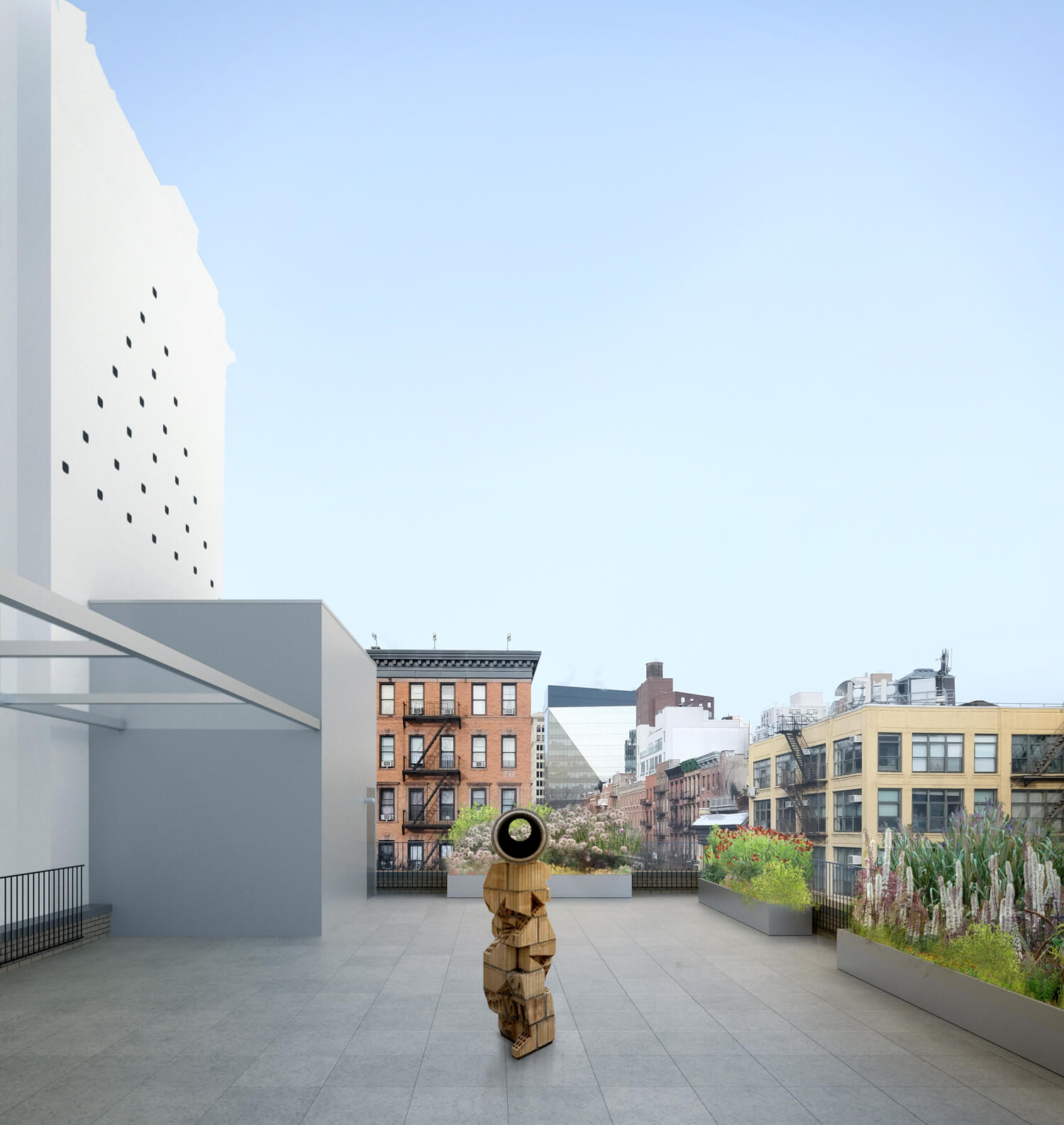Swiss Institute | 38 St. Marks | ArtAsiaPacific
Jan 01 2018

F R I E N D S ABROAD | New York’s Swiss Institute ventures far beyond Switzerland
By Kevin McGarry
The founding of New York’s Swiss Institute was an expression of national pride, much more about tearing down boundaries than upholding them. Its founders are an intrepid group of Swiss patrons based in New York, who were inspired by the fact that other nations had their own outposts—Deutsche Institute, Japan Society—for cultural exchange in the city. They thought to do the same, and share work that was being made in Switzerland with New York. The broad sweep of Swiss culture that constituted the early days of Swiss Institute reflects the heterogeneous programming and topics that audiences still expect from the US-based kunsthalle today: cinema, dance, music, literary events and, of course, visual art.
The key difference between Swiss Institute and other like-minded institutions importing art with a titular geographic focus is that the organization was founded independently, in 1986. Later on, Swiss Institute would receive considerable Swiss cultural funds from Pro Helvetia, but its inception as an autonomously funded organization has informed its ability to incorporate programming from places and contexts far beyond Switzerland. In simple terms, this reflects Switzerland’s own station in the world, as a multicultural crossroads at the heart of Europe that is nonetheless excepted from the European Union, and as distinctly Swiss as it is also a nation with four languages: German, French, Italian and Rhaeto-Romanic. Thus, the core programming of Swiss Institute has, and always will, revolve around the art and culture of Switzerland. This regularly forms a structure for the institution’s modes of enquiry. “Whether we are considering the history of art that has taken place in Switzerland in a movement like Dada, producing a show based on the St. Petersburg Paradox (a game theory developed by Swiss mathematicians), or showing writer Robert Walser’s microscripts, we often use the Swiss context as a starting point,” said Simon Castets, Swiss Institute’s director. Such inquiries invariably lead to showcases that plug these points of inspiration into timely conversations about art and culture developing in New York City, another—albeit very different—locus of international exchange that is anchored by its mythologies as a place. In addition to its culture being profoundly inspiring to artists, Switzerland possesses quixotic legacies that have captured the imaginations of those outside the country. Swiss Institute has taken some of these—“health and wealth, efficiency, chocolate, humor in the everyday, exacting design and architecture,” said Castets—and played with them lightheartedly, while dispelling others that are too simplistic. This brought the multifaceted character of Switzerland to life in an international context, and presented a stage for the practices of emerging artists based in Switzerland, as well as maintaining long-term dialogues with Swiss diaspora artists or those who have made their home in the country.
As a forward-thinking institution, Swiss Institute has confronted the challenges facing midsized institutions in the United States, and more broadly throughout the international art world. Changing conditions around patronage and fundraising, from individuals, governments, foundations and brands alike, have pushed organizations to develop more meaningful, integrated relationships between staff, artists and members of all levels. The organization is in the unique position of being an American institution with Swiss roots, and therefore the organization’s supporters are spread internationally. Unlike other New York-based institutions, Swiss Institute has engaged with the architecture and history of the US for cross-cultural inspiration. The “SI OFFSITE” program makes the best of the organization’s transitional moment between exhibition spaces, as its ambitious new long-term home is renovated at 38 St. Marks Place in the East Village. “On a Half Tank of Gas” was a village-wide project sited in New Glarus, Wisconsin—roughly 1,000 miles from New York and 4,000 from Zürich—a rural town to which a group of economic migrants from Glarus, Switzerland, moved in the 19th century. The event unfolded over three days in October, with projects and performances by more than a dozen artists including Olga Balema, Valentin Carron, Chadwick Rantanen and Shirin Yousefi, spanning venues ranging from a bank, a tavern and a miniature golf course. The title was inspired by a flyer from a local business promising New Glarus, with its seemingly outof-place collection of chalets, as a way for Wisconsinites to “Visit Switzerland . . . On Half a Tank of Gas.”
Other recent projects have not only expanded where contemporary art is sited, but augmented its adjacent disciplines. For example, the Annual Architecture and Design Series, inaugurated in 2014, is a recurring exhibition organized by a guest curator. The initiative responds to recent trends in the broadening purviews of museums, while also paying homage to the prominent place of the graphic arts in Swiss culture and thought, as well as to the roots of Swiss Institute itself. Its very first exhibition in the 1980s featured more than 40 years’ worth of poster designs by Swiss graphic designer and educator Armin Hofmann, who was instrumental in the development of Swiss International Style, an aesthetic that in its spare ubiquity could be taken as a sublimation of Swiss ethos at large. This moment represents a turning point in New York’s downtown nonprofit scene, with numerous artist-centered institutions shifting spaces and infrastructures. Now, the majority of Swiss Institute’s energy is placed on the development of its new permanent home. As construction on 38 St. Mark’s continues, alongside “SI OFFSITE,” artists are serving as integral advisors on the conception and design of the building itself. In the chapter ahead, the new building should open its doors as a brick-and-mortar manifestation of what is most unique and enduring about this institution: that in its dedicated promotion of crosscultural exchange, it continually reinvents itself as nontraditional and inclusive, and looks to Switzerland as well as neighboring places, fields and ideas for expanding upon its mission in thoughtful ways.
